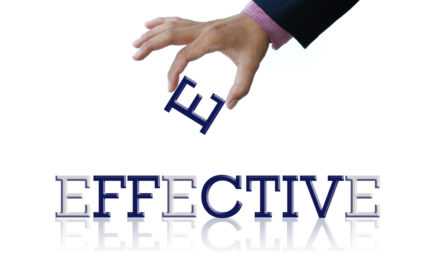HR leaders who have been paying attention have been noticing that unions are  looming larger in their operating decisions than in recent memory. True, the argument can be made that their membership numbers in the private sector are still historically low. But unions are drawing their strength and power from new sources – namely union-friendly political administrations on both the state and national levels.
looming larger in their operating decisions than in recent memory. True, the argument can be made that their membership numbers in the private sector are still historically low. But unions are drawing their strength and power from new sources – namely union-friendly political administrations on both the state and national levels.
While the prospect of union interference itself can only be bad news to most employers, unions can help you make your workplace an even better place to work. Not through collective bargaining and contractual strong-arming. But by showing you where you can improve your culture and give your people what they need, want and deserve in advance of organizing activities. During my role as the head of HR for Honda of America Manufacturing, we kept our organization – and our suppliers – union-free (even through multiple organizing campaigns) by actually using union strategies and promises as ways to improve our own operations. So they won’t have to.
The one question that makes all the difference: For instance, the most important thing we did – repeatedly – was to ask ourselves, “What can the unions do for our people that we’re not already doing?” We would force ourselves to override the kneejerk answer: “Well, nothing.” And then we’d search for ways we could improve our people’s work experience. One of the areas, for instance, that unions had the advantage over us was the employees’ recourse for appeal in the event they were separated. While the United Auto Workers’ (UAW) union offered a formal arbitration appeal process that gave employees a second chance at saving their jobs, we didn’t. So, we designed one.
And we made ours better than the UAW’s. Where the UAW used third-party arbitrators, we used a randomly selected panel of the separated employee’s peers to hear out the employee’s case and make the final decision. Of course, the UAW criticized this approach thoroughly, calling it a “kangaroo court,” thinking that it was criticizing Honda. But it was actually belittling the very people it wanted to bring on board as members.
Beating the unions at the “us/them game”: Unions also offer employees a sense of belonging – a way to identify with a group that’s larger, more powerful than they are individually. “Us/them” is a powerful dichotomy. We recognized that. So what did we do? We made the UAW the “them.” The “us” was all of us within Honda.
Here’s how we did it:
Everyone wears white: We all had the exact same uniform. Specially designed white shirt and pants. From CEO on down, the uniform was the same. That visual reminder that we were all members of the same team reinforced the organizational value that we were all equally important to the company and its success.
We used our vocabulary as a unifying tool: Every culture has its own vocabulary that sets outsiders apart from insiders. We could allow the UAW to set the terms, literally, claiming our employees for their own through their messaging. Or, we could build a proverbial wall around our people by the words we chose to use to create a sense of unity and a respectful, inclusive culture. For instance, the UAW called our people employees, we called them associates. They would say discipline, but we would say corrective action. Consequently, every time the UAW would send out a communication using their vocabulary, they immediately set themselves apart as outsiders. So what did they do? They launched a campaign ridiculing our terminology. Which only made them seem petty and unprofessional. And it revealed their real mission – which was to attack the company – rather than any mission of representing their members’ best interests.
Likewise, Honda was never “the” company, it was always “our” company. It belonged to all of us, and we were all equally important to its competitiveness and success.
We didn’t talk in “third party” terms: Unions love to talk about themselves as the “third party,” which implies that inside the company there are two parties: evil management and victimized workers. But to all of us at Honda, there were only two groups: us (all of us, one team, at Honda) and them, the “outside party.”
Followers of the Honda’s success in staying union free would be surprised to hear that I’m not universally anti-union. If unions are the only way for some employees can get the respectful treatment and safe conditions they need to do their best work, then their particular companies deserve to be organized.
But most importantly, employers can take a proactive position on their own, without waiting for the push to come from that outside party. Give your people the respect they deserve, the sense of belonging that they need, and the fair compensation they earn, and you’ve beaten the unions at their own game.
Latest posts by Tim Garrett (see all)
- Develop Your Leadership to Be Talent Keepers - November 28, 2022
- Retention Vs. Recruitment: The Revolving Employment Door Dilemma - January 15, 2019
- Union Jujitsu: How to Leverage Union Strategy to Beat It at Its Own Game - September 11, 2011











